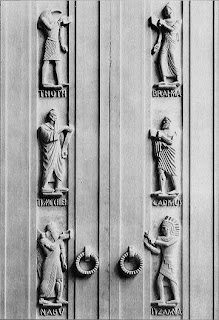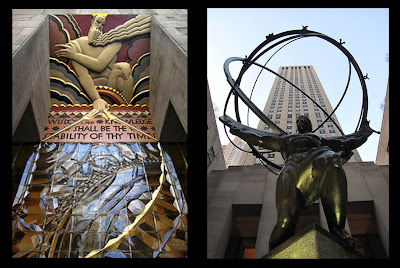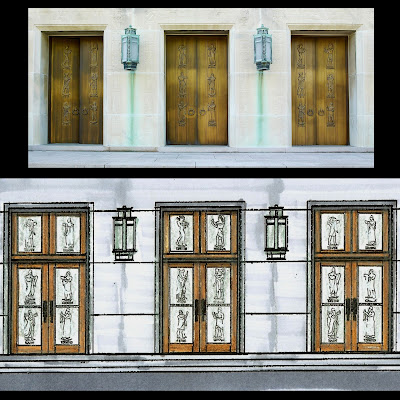>
 |
| Erin Antognoli mixes together steel, glass and imagery in her evocative sculptures. |
Constructing Content brings together three artists from the Washington, DC area that explore the ways in which ideas are translated and transformed as artists move from one medium to another. Arriving at kiln-glass from diverse backgrounds, these crossover artists bring new concerns and techniques to the medium. Working at the Washington Glass School, Erin Antognoli, Sean Hennessey and Erwin Timmers are kindred spirits, and their 3 person show opens this weekend at the Delaplaine Arts Center in Maryland.
 |
| Sean Hennessey creates narrative cast glass panels. |
“We are not in pursuit of the perfect object, or even, necessarily, beautiful objects.” explains painter and sculptor Sean Hennessey, “We are all driven by the narratives that we bring to our work. Our content drives and informs the imagery and the form. We treat glass like another artistic media, using it as an exploration of ideas”
 |
| Erin Antognoli, “Heading West To Find a Bridge”, detail. |
“I made the switch to glass and steel sculpture after nearly two decades as a photographer,” explains photographer and sculptor Erin Antognoli, “doing anything by hand seems to have become a lost art. Therefore, as a challenge to the age of digitization, it seemed fitting to me to hand-work the physical sculpture by grinding the glass circles, welding the steel frames, and showcasing handwritten letters.”
 |
| Erwin Timmers explores ecological implications in his recycled glass sculpture. |
Other artists, through kiln-glass, find a reinforcement of their artistic beliefs. “There is a directness, freedom, and honesty I feel working in glass,” says Washington Glass School co-founder, Erwin Timmers. “I’m not sure I felt quite the same way in my years of sculpting metal.” Erwin works with recycled glass, and environmental integrity informs his work. He feels that material and content are intertwined. “I believe there are no neutral materials,” explains Erwin, “I try to use materials for their intrinsic and philosophical content.”
 |
| Sean Hennessey, “Promise Locks” detail. |
These artists, with work as diverse as their backgrounds, are brought together because their unique visions have helped build a new direction for glass sculpture.
 |
| Erin Antognoli, “The Optimist” |
Constructing Content
US Library of Congress’ New Cast Sculptural Glass Doors
>
 |
| Aerial view of US Capitol on the Mall, Washington, DC. Library of Congress is center bottom of photo. |
The Washington Glass Studio (WGS) has started the creation of the new cast sculptural glass doors for the Library of Congress (LOC) in Washington, DC. The design of the project started in 2004, when the Architect of the Capitol (AOC) first asked WGS about advise on their initial proposal to replace the original historic bronze doors of the LOC Adams Building, as the doors required security and changes to be code-compliant. The AOC also sought to reference the artistic heritage of the original doors in this important United States building.
 |
| One of the original bronze door pairs by sculptor Lee Lawrie |
The original (11′-0″H) bronze doors had functional issues and will be retained in their present hold-open position, recessed into architectural niches. The 16 sculpted bronze doors feature high-relief sculptures by American artist Lee Lawrie, whose best known work is the architectural sculpture on and around New York’s Rockefeller Center. Lawrie’s bronze doors were designed to commemorate the history of the written word, depicting gods of writing as well as real-life Native American Sequoyah.
 |
| Lee Lawrie, 1877-1963, American sculptor, best known for his architectural work at NY’s Rockefeller Center, especially for the free-standing “Atlas” sculpture. |
 |
| Ogma and Sequoyah, sculpted bronze figures by Lee Lawrie. Door detail, Library of Congress John Adams Building, Washington, DC. |
- Hermes, the messenger of the gods
- Odin, the Viking-Germanic creator of the runic alphabet
- Ogma, the Irish god who invented the Gaelic alphabet
- Itzamna, the Mayan god
- Quetzalcoatl, the Aztec god
- Sequoyah, a Native American
- Thoth, an Egyptian god
- Ts’ang Chieh, the Chinese patron of writing
- Nabu, an Akkadian god
- Brahma, an Indian god
- Cadmus, the Greek sower of dragon’s teeth
- Tahmurath, a Persian hero
The new door design incorporates cast glass panels mounted within a bronze framework, incorporating current egress and security requirements. The kilnformed sculptural glass will be made from molds taken off the original door sculptures. Using clear Bullseye glass to cast, the sculpted glass panels will then be laminated to tempered glass for safety. The new glass doors will create a contemporary luminosity to the building entrances, while keeping the character of the historic landmark structure.
 |
| original bronze doors – east side (top) Design of new bronze and cast glass doors – west side (bottom) |
The scale of the project has prompted a collaboration between Washington Glass Studio and Fireart Glass Studio in Portland, OR. The project “dream-team” includes (Bullseye Glass co-founder) Ray Ahlgren, Erwin Timmers, Michael Janis, Tim Tate and Sean Hennessey.
Master mold caster, Sean Hennessey, has started the project, creating the molds from the existing bronze doors in-situ. Some photos of that process will be posted later.
